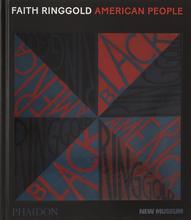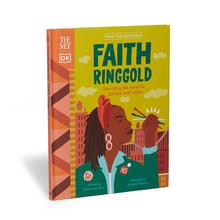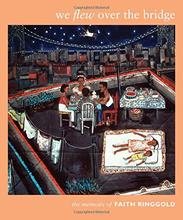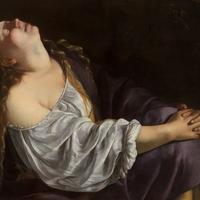More about Church Picnic Story Quilt
- All
- Info
- Shop

Contributor
One of the (many) great things about Church Picnic Story Quilt is that, like much of Faith Ringgold’s work, it’s fairly straightforward.
That’s not to say it doesn’t contain complexity and scope — it's quite intricate and quilting as social commentary is genuinely intriguing stuff — but it is true that your average viewer can get a sense of the narrative in this work without needing to squint at the little placard next to it. What may be hard to tell because of the teen-tiny font is that, in the text framing the quilt, an unnamed narrator shares her thoughts about depicted recent church picnic...including some of the scandals (Love triangles! Heartbreak! Oh my!)
In case you aren’t intimately familiar with the geography of Georgia, the picnic is set in Atlanta’s Piedmont Park, which was a baseball arena (for the Atlanta Crackers) and green space in 1909, the year this scene is set. According to the High Museum, which commissioned this work, Ringgold saw this era as a time of great optimism and hope for Black people in the South. After the Civil War, several Black colleges opened in Atlanta, which would go on to become some of the most important HBCU (Historically Black Colleges and Universities) in the country, and a prosperous Black middle and upper class emerged. Piedmont Park was also the site of Booker T. Washington's famous 1895 speech on race relations in the South that led to the "Atlanta Compromise," a proposition which encouraged some progress in the form of Black residents receiving education and work opportunities, but was criticized for its insistence that Black people tolerate inequality and segregation and do not receive the right to vote. In this context, the gathering of Black families in Piedmont Park shown in Ringgold's quilt is a celebration of resistance and the continuing fight for civil rights.
Today, the park serves all kinds of purposes as a playground, community gathering area, and, in 2011, a stage for a headlining performance by the band Coldplay. Just imagine, a hundred years later and we get Chris Martin belting “Fix You” atop the patch of grass where that potato salad once stood - somehow not quite as impactful as the scene Ringgold shows us.
This particular quilt ended up being the cause of a big lawsuit in the nineties after the television show Roc, aired on BET, had a poster of the piece hanging in the background of one of their episodes. Ringgold happened to see a rerun of the episode years later and sued, as she had never given permission for the show to use the image. While she lost the first suit, she ended up winning her appeal after arguing that using the poster as set dressing didn’t qualify as an “educational purpose,” as the opposing side was claiming. BET also got in trouble for cropping out the tagline on the poster which identified it as an exclusive reproduction by the High Museum.
Sources
- Church Picnic Story Quilt. (n.d.). Retrieved April 26, 2021, from https://www.cc.gatech.edu/projects/hmuseum/themes/city/church-picnic-st…
- FindLaw's United States Second Circuit case and opinions. (n.d.). Retrieved April 26, 2021, from https://caselaw.findlaw.com/us-2nd-circuit/1054870.html
- Mahdawi, A. (2019, June 04). The quilts that made America quake: How Faith Ringgold fought the power with fabric. Retrieved April 26, 2021, from https://www.theguardian.com/artanddesign/2019/jun/04/faith-ringgold-new…
- Piedmont Park. (2021, March 30). Retrieved April 26, 2021, from https://en.wikipedia.org/wiki/Piedmont_Park















